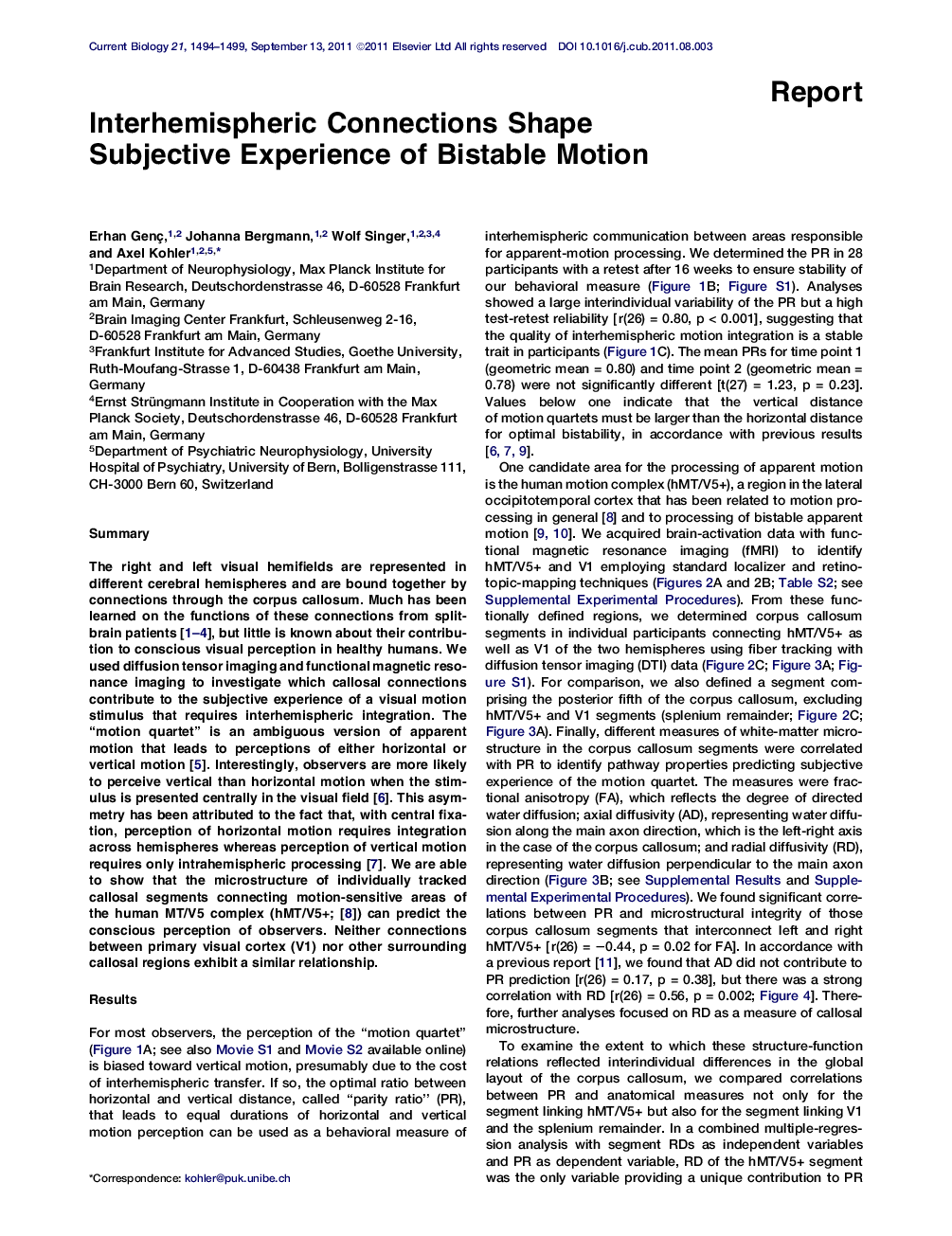| Article ID | Journal | Published Year | Pages | File Type |
|---|---|---|---|---|
| 2043121 | Current Biology | 2011 | 6 Pages |
SummaryThe right and left visual hemifields are represented in different cerebral hemispheres and are bound together by connections through the corpus callosum. Much has been learned on the functions of these connections from split-brain patients [1, 2, 3 and 4], but little is known about their contribution to conscious visual perception in healthy humans. We used diffusion tensor imaging and functional magnetic resonance imaging to investigate which callosal connections contribute to the subjective experience of a visual motion stimulus that requires interhemispheric integration. The “motion quartet” is an ambiguous version of apparent motion that leads to perceptions of either horizontal or vertical motion [5]. Interestingly, observers are more likely to perceive vertical than horizontal motion when the stimulus is presented centrally in the visual field [6]. This asymmetry has been attributed to the fact that, with central fixation, perception of horizontal motion requires integration across hemispheres whereas perception of vertical motion requires only intrahemispheric processing [7]. We are able to show that the microstructure of individually tracked callosal segments connecting motion-sensitive areas of the human MT/V5 complex (hMT/V5+; [8]) can predict the conscious perception of observers. Neither connections between primary visual cortex (V1) nor other surrounding callosal regions exhibit a similar relationship.
Graphical AbstractFigure optionsDownload full-size imageDownload high-quality image (224 K)Download as PowerPoint slideHighlights► Individual characteristics of interhemispheric motion processing are stable over time ► Characteristics of transcallosal hMT/V5+ connections predict subjective experience
